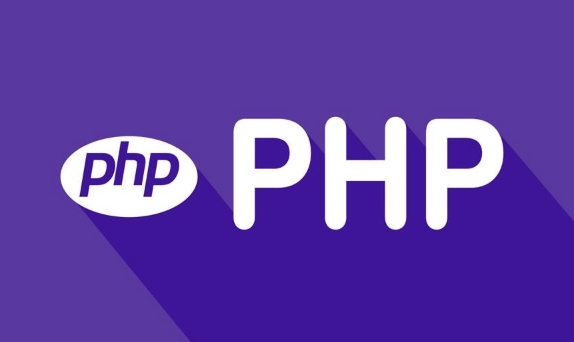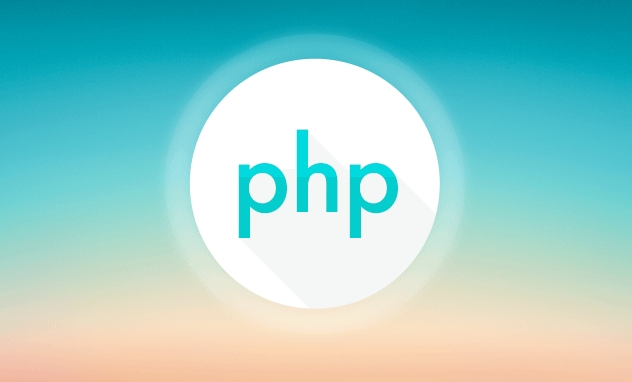PHP 8 Installation Guide
The steps to install PHP 8 on Ubuntu are: 1. Update the package list; 2. Install PHP 8 and basic components; 3. Check the version to confirm that the installation is successful; 4. Install additional modules as needed. Windows users can download and decompress the ZIP package, then modify the configuration file, enable extensions, and add paths to environment variables. macOS users recommend using Homebrew to install, and perform steps such as adding tap, installing PHP 8, setting the default version and verifying the version. Although the installation methods are different under different systems, the process is clear, so you can choose the right method according to the purpose.

Installing PHP 8 is actually not difficult, the key is to choose the right method and version. Different operating systems and usage scenarios (such as local development and production environment) will affect your installation method. The following is based on several common situations, how to successfully install PHP 8.

How to Install PHP 8 on Ubuntu
If you are using Ubuntu system, the most convenient way is to install it through the apt package manager. PHP 8 is already included in the default source for Ubuntu 20.04 and above.
The steps are as follows:

-
Update the package list:
sudo apt update
Install PHP 8:

sudo apt install php php-cli
Check whether the installation is successful:
php -v
If additional modules are needed, such as MySQL support or GD image processing library, you can install them as needed:
sudo apt install php-mysql php-gd
This method is suitable for fast-building environments, but if you want to control the version more accurately, or use some extensions that are not in the default source, you can consider compiling and installing it from the source code.
How to install PHP 8 on Windows
Windows users usually have two options: manually configure or use an integrated environment (such as XAMPP, WAMP).
If you want to have a deeper understanding of the operating mechanism, manual installation is also a good choice:
- Go to the PHP official website to download the Windows ZIP package (it is recommended to choose the Thread Safe version if you plan to use it with Apache).
- Unzip to a directory, such as
C:\php. - Modify
php.ini-developmentfile name tophp.iniand enable the extension as needed, such as uncomment this line to enable the mysqli extension:extension=mysqli
- Add
C:\phpto the system environment variable Path. - Enter
php -von the command line to verify that it is effective.
Note: If you are using Nginx or Apache, you may also need to configure the corresponding server module loading path.
How to install PHP 8 on macOS
macOS can use Homebrew to simplify the installation process:
If Homebrew has not been installed yet, execute this command to install:
/bin/bash -c "$(curl -fsSL https://raw.githubusercontent.com/Homebrew/install/HEAD/install.sh)"
Add PHP tap:
brew tap shivammathur/php
Install PHP 8:
brew install shivammathur/php/php@8.0
Set the default PHP version:
brew link --force php@8.0
Verify the version:
php -v
The advantage of Homebrew installation is that it can flexibly switch multiple PHP versions, which is suitable for students who are doing multi-project development.
Basically that's it. The installation methods are slightly different under different systems, but the overall process is relatively clear. The key is to choose the right method according to your system and purpose, and then remember to install the commonly used extensions, and it will basically be used.
The above is the detailed content of PHP 8 Installation Guide. For more information, please follow other related articles on the PHP Chinese website!

Hot AI Tools

Undress AI Tool
Undress images for free

Undresser.AI Undress
AI-powered app for creating realistic nude photos

AI Clothes Remover
Online AI tool for removing clothes from photos.

Clothoff.io
AI clothes remover

Video Face Swap
Swap faces in any video effortlessly with our completely free AI face swap tool!

Hot Article

Hot Tools

Notepad++7.3.1
Easy-to-use and free code editor

SublimeText3 Chinese version
Chinese version, very easy to use

Zend Studio 13.0.1
Powerful PHP integrated development environment

Dreamweaver CS6
Visual web development tools

SublimeText3 Mac version
God-level code editing software (SublimeText3)

Hot Topics
 1793
1793
 16
16
 1735
1735
 56
56
 1587
1587
 29
29
 267
267
 587
587
 Commenting Out Code in PHP
Jul 18, 2025 am 04:57 AM
Commenting Out Code in PHP
Jul 18, 2025 am 04:57 AM
There are three common methods for PHP comment code: 1. Use // or # to block one line of code, and it is recommended to use //; 2. Use /.../ to wrap code blocks with multiple lines, which cannot be nested but can be crossed; 3. Combination skills comments such as using /if(){}/ to control logic blocks, or to improve efficiency with editor shortcut keys, you should pay attention to closing symbols and avoid nesting when using them.
 Tips for Writing PHP Comments
Jul 18, 2025 am 04:51 AM
Tips for Writing PHP Comments
Jul 18, 2025 am 04:51 AM
The key to writing PHP comments is to clarify the purpose and specifications. Comments should explain "why" rather than "what was done", avoiding redundancy or too simplicity. 1. Use a unified format, such as docblock (/*/) for class and method descriptions to improve readability and tool compatibility; 2. Emphasize the reasons behind the logic, such as why JS jumps need to be output manually; 3. Add an overview description before complex code, describe the process in steps, and help understand the overall idea; 4. Use TODO and FIXME rationally to mark to-do items and problems to facilitate subsequent tracking and collaboration. Good annotations can reduce communication costs and improve code maintenance efficiency.
 Learning PHP: A Beginner's Guide
Jul 18, 2025 am 04:54 AM
Learning PHP: A Beginner's Guide
Jul 18, 2025 am 04:54 AM
TolearnPHPeffectively,startbysettingupalocalserverenvironmentusingtoolslikeXAMPPandacodeeditorlikeVSCode.1)InstallXAMPPforApache,MySQL,andPHP.2)Useacodeeditorforsyntaxsupport.3)TestyoursetupwithasimplePHPfile.Next,learnPHPbasicsincludingvariables,ech
 Quick PHP Installation Tutorial
Jul 18, 2025 am 04:52 AM
Quick PHP Installation Tutorial
Jul 18, 2025 am 04:52 AM
ToinstallPHPquickly,useXAMPPonWindowsorHomebrewonmacOS.1.OnWindows,downloadandinstallXAMPP,selectcomponents,startApache,andplacefilesinhtdocs.2.Alternatively,manuallyinstallPHPfromphp.netandsetupaserverlikeApache.3.OnmacOS,installHomebrew,thenrun'bre
 Improving Readability with Comments
Jul 18, 2025 am 04:46 AM
Improving Readability with Comments
Jul 18, 2025 am 04:46 AM
The key to writing good comments is to explain "why" rather than just "what was done" to improve the readability of the code. 1. Comments should explain logical reasons, such as considerations behind value selection or processing; 2. Use paragraph annotations for complex logic to summarize the overall idea of functions or algorithms; 3. Regularly maintain comments to ensure consistency with the code, avoid misleading, and delete outdated content if necessary; 4. Synchronously check comments when reviewing the code, and record public logic through documents to reduce the burden of code comments.
 Writing Effective PHP Comments
Jul 18, 2025 am 04:44 AM
Writing Effective PHP Comments
Jul 18, 2025 am 04:44 AM
Comments cannot be careless because they want to explain the reasons for the existence of the code rather than the functions, such as compatibility with old interfaces or third-party restrictions, otherwise people who read the code can only rely on guessing. The areas that must be commented include complex conditional judgments, special error handling logic, and temporary bypass restrictions. A more practical way to write comments is to select single-line comments or block comments based on the scene. Use document block comments to explain parameters and return values at the beginning of functions, classes, and files, and keep comments updated. For complex logic, you can add a line to the previous one to summarize the overall intention. At the same time, do not use comments to seal code, but use version control tools.
 PHP Development Environment Setup
Jul 18, 2025 am 04:55 AM
PHP Development Environment Setup
Jul 18, 2025 am 04:55 AM
The first step is to select the integrated environment package XAMPP or MAMP to build a local server; the second step is to select the appropriate PHP version according to the project needs and configure multiple version switching; the third step is to select VSCode or PhpStorm as the editor and debug with Xdebug; in addition, you need to install Composer, PHP_CodeSniffer, PHPUnit and other tools to assist in development.
 Good vs. Bad PHP Comments
Jul 18, 2025 am 04:55 AM
Good vs. Bad PHP Comments
Jul 18, 2025 am 04:55 AM
Comments are crucial in code because they improve the readability and maintenance of the code, especially in projects like PHP that are multi-collaborative and long-term maintenance. Reasons for writing comments include explaining “why do this” to save debugging time and be friendly to newbies and reduce communication costs. The representation of good comments includes explaining the role of functions or classes to explain complex logic intent marking to-dos or potential problems, and writing API interface documentation annotations. Typical manifestations of bad comments include repeated code content comments that are inconsistent with code and using comments to cover up bad code and retaining old information. Suggestions for writing comments include prioritizing comments "why" keeping comments synced with code Use a unified format to avoid emotional statements and consider optimizing code rather than relying on comments when the code is difficult to understand.






